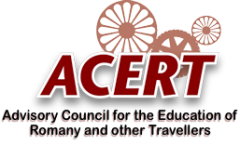The Tinker Experiment lasted from 1940 until 1980 and was a programme designed to integrate Scottish Travellers into mainstream Scottish society through forced settlement in substandard buildings. It was supported by the UK government, the Church of Scotland and Scottish local authorities. Nomadic families risked having their children taken into care if they didn’t attend school regularly.
The BBC Radio 4 programme History on the Edge interviews residents of Bobbin Mill near Pitlochry where, in 1946, the McPhee family and other Gypsy Travellers were moved into an old wartime hut converted for four families. The accommodation was small and overcrowded for the nine McPhee children and their parents, and was without amenities such as electricity. There was also asbestos in the walls which wasn’t removed until the 1980s.
At Bobbin Mill, Anita meets Shamus McPhee and three of his sisters who still live on the site. Old holiday chalets have in recent years replaced the hutted accommodation and they now have electricity and running water. Yet the family still suffer hardship and discrimination despite having been to university and contributed to society. Prejudice against Gypsy Travellers runs so deep among the settled community that they’ve found it difficult to get work if they reveal their background. And – having fallen between the settled and the nomadic ways of life – none of them has found a life partner or had children.
The McPhees are now seeking an apology from the Scottish Government as they feel their lives have been blighted by the Tinker Experiment.

